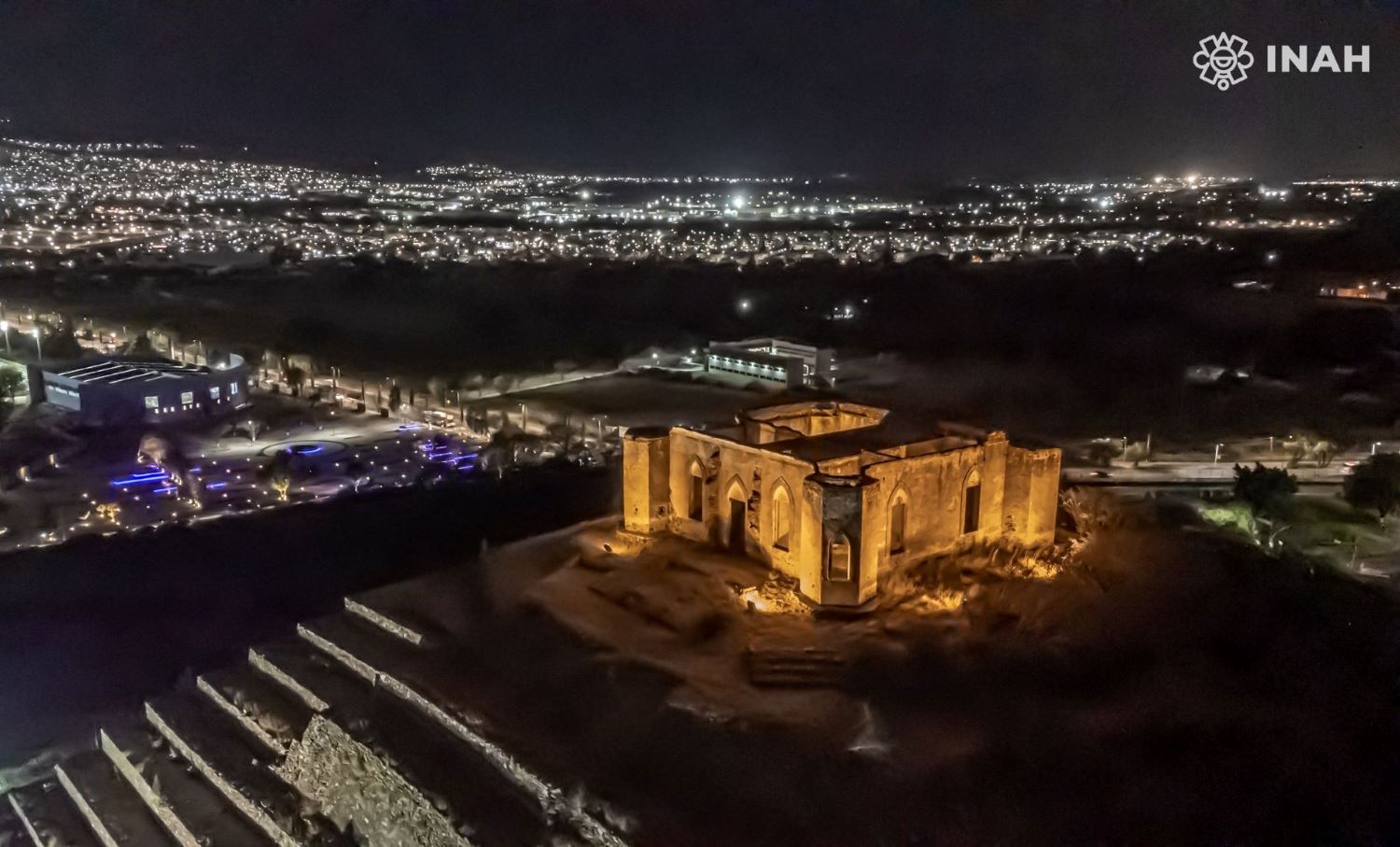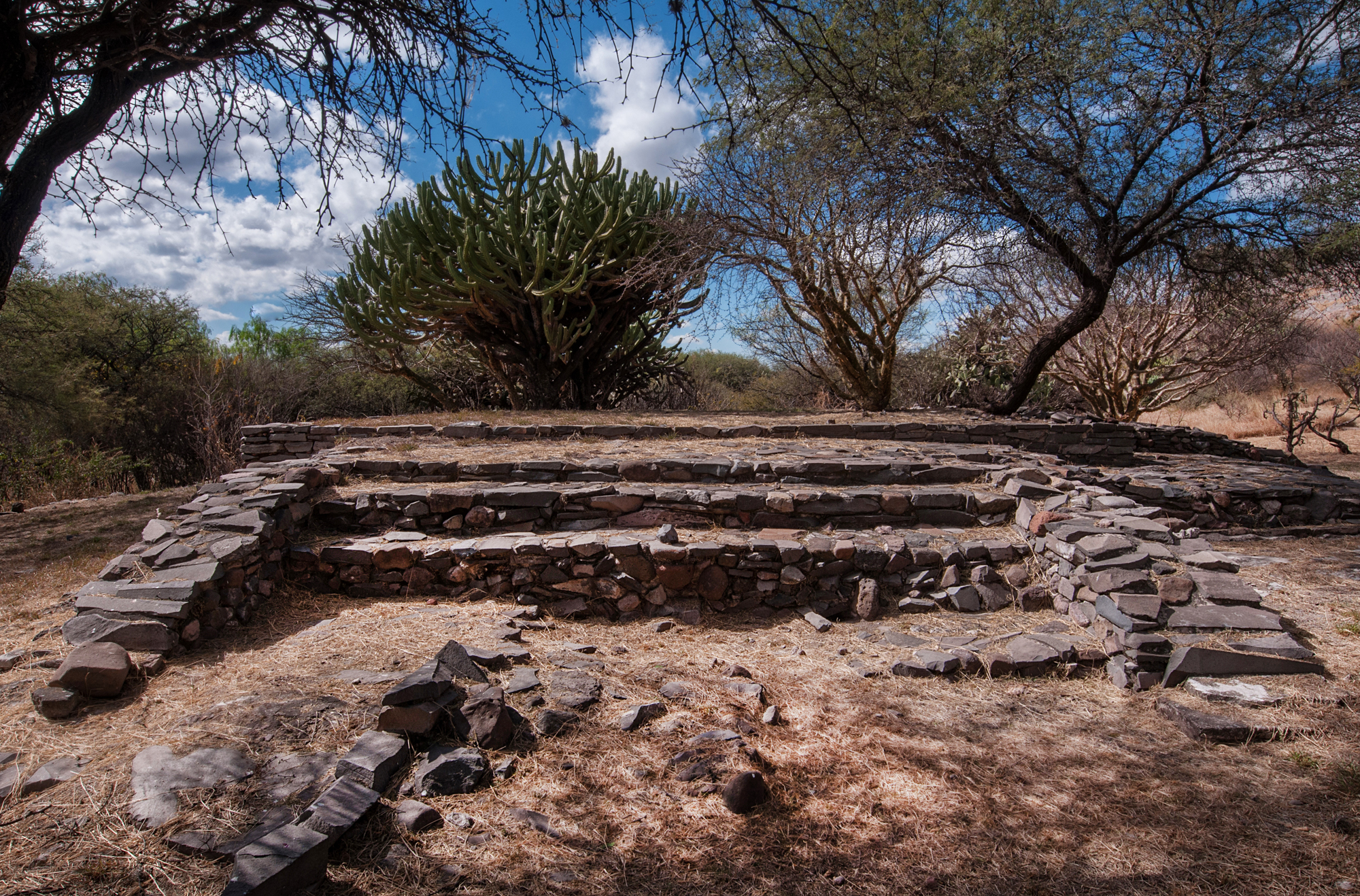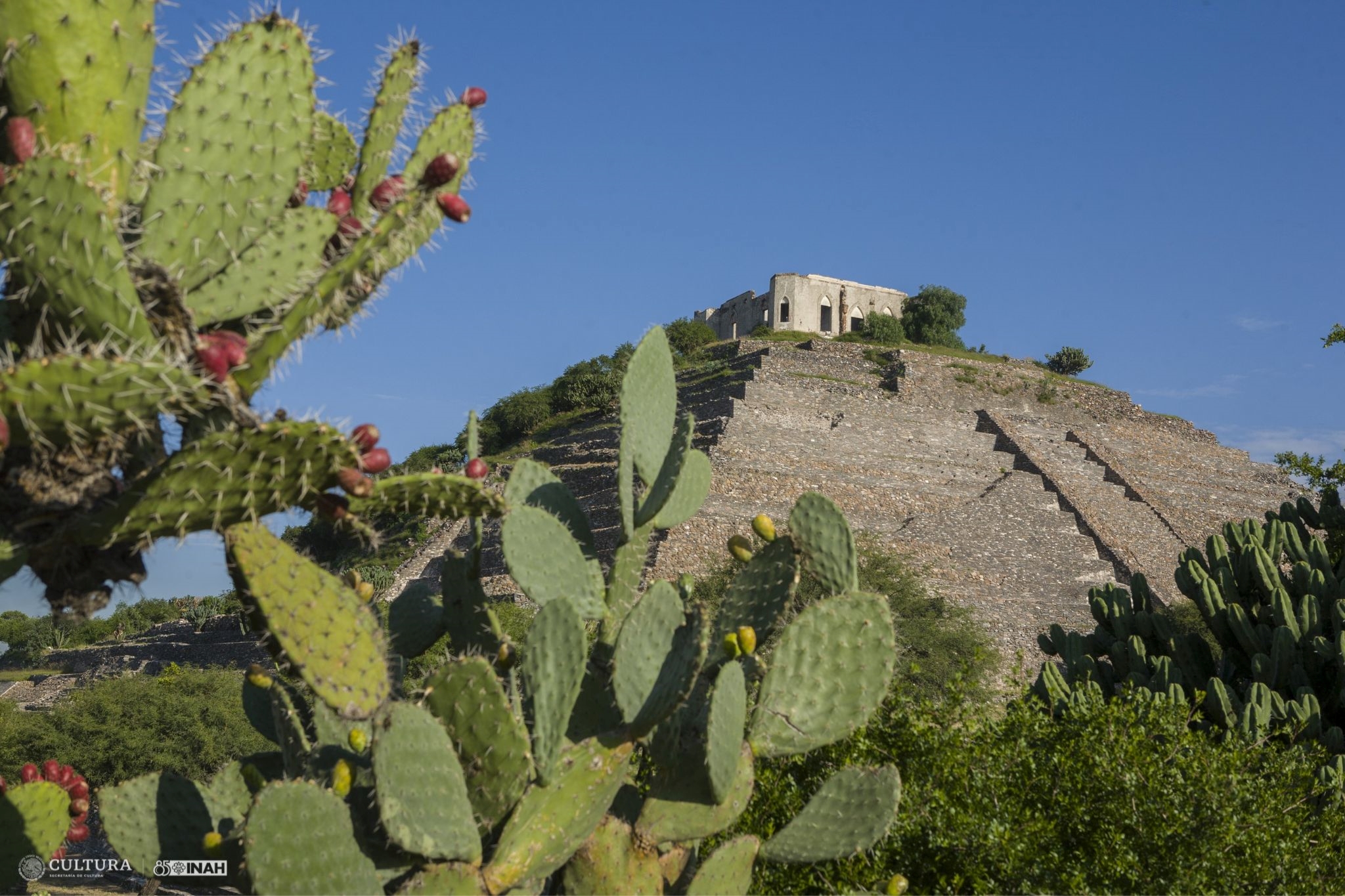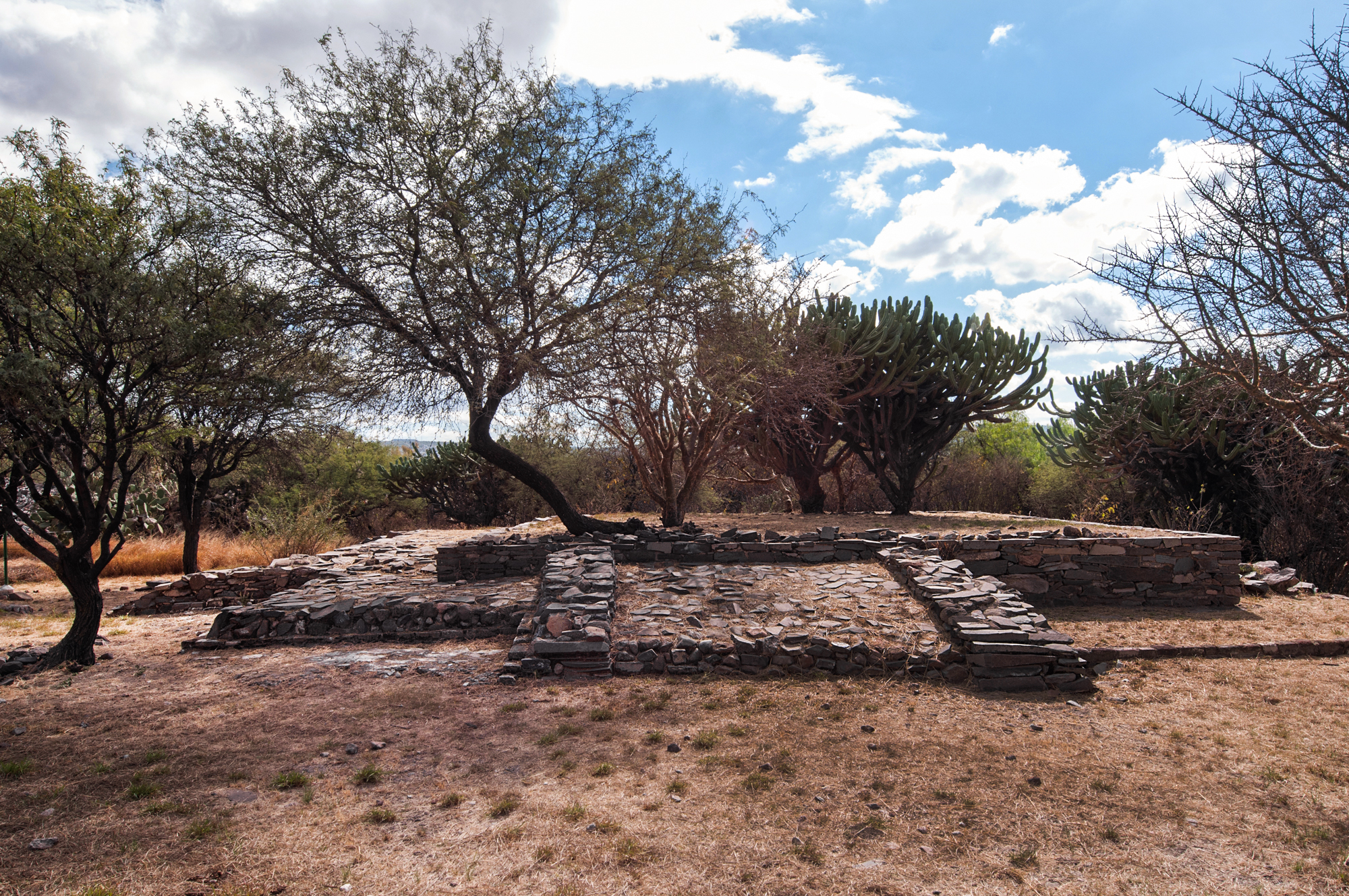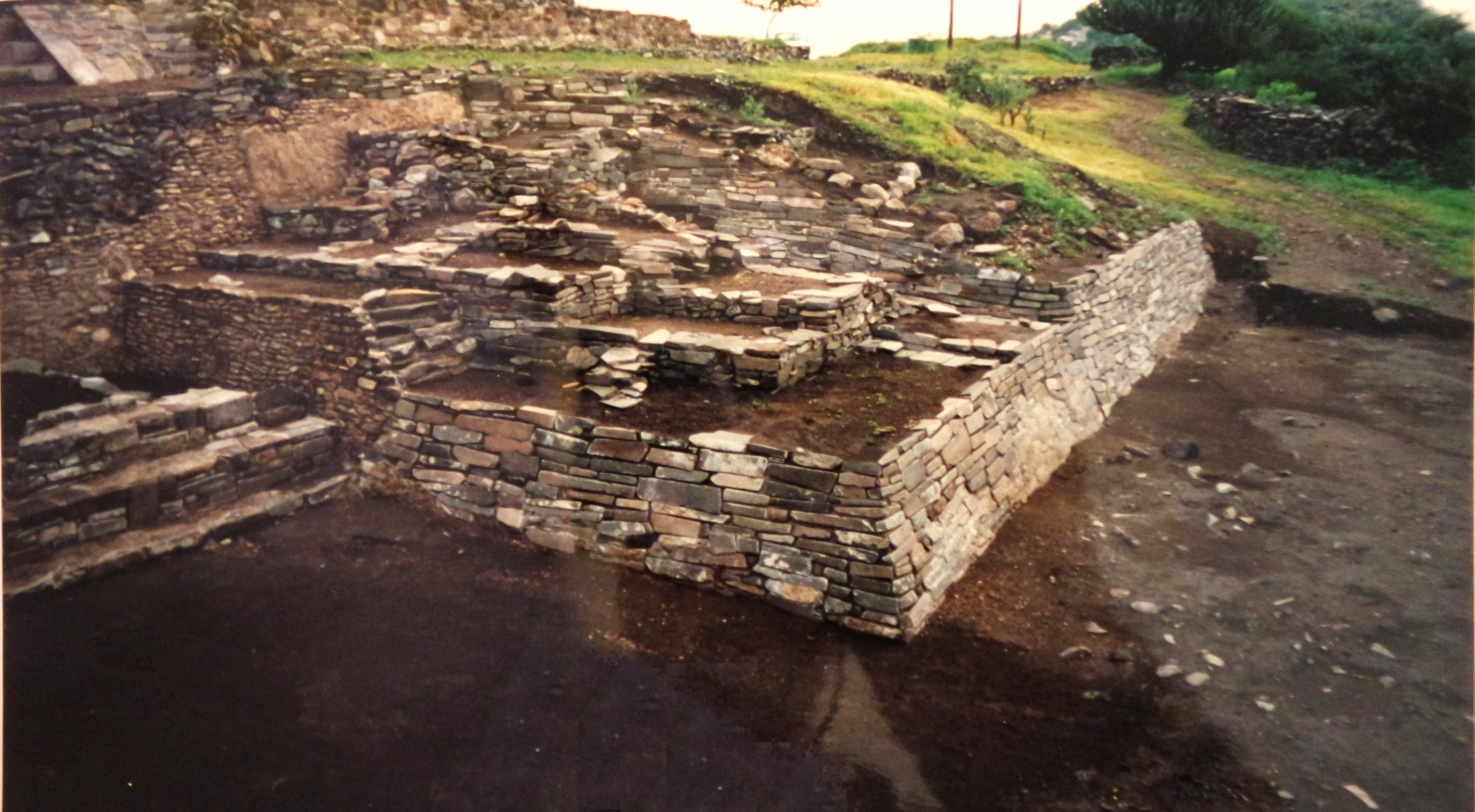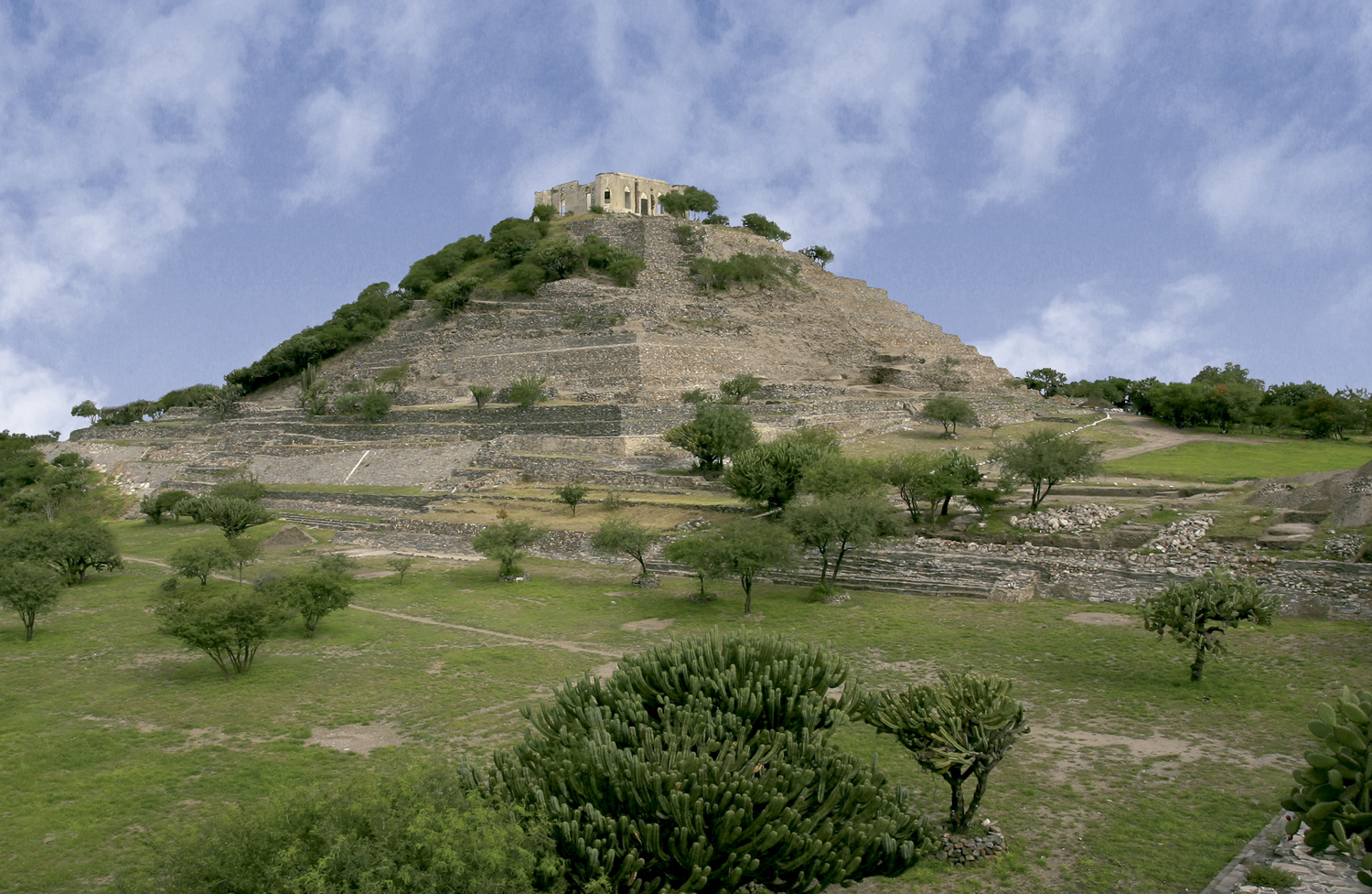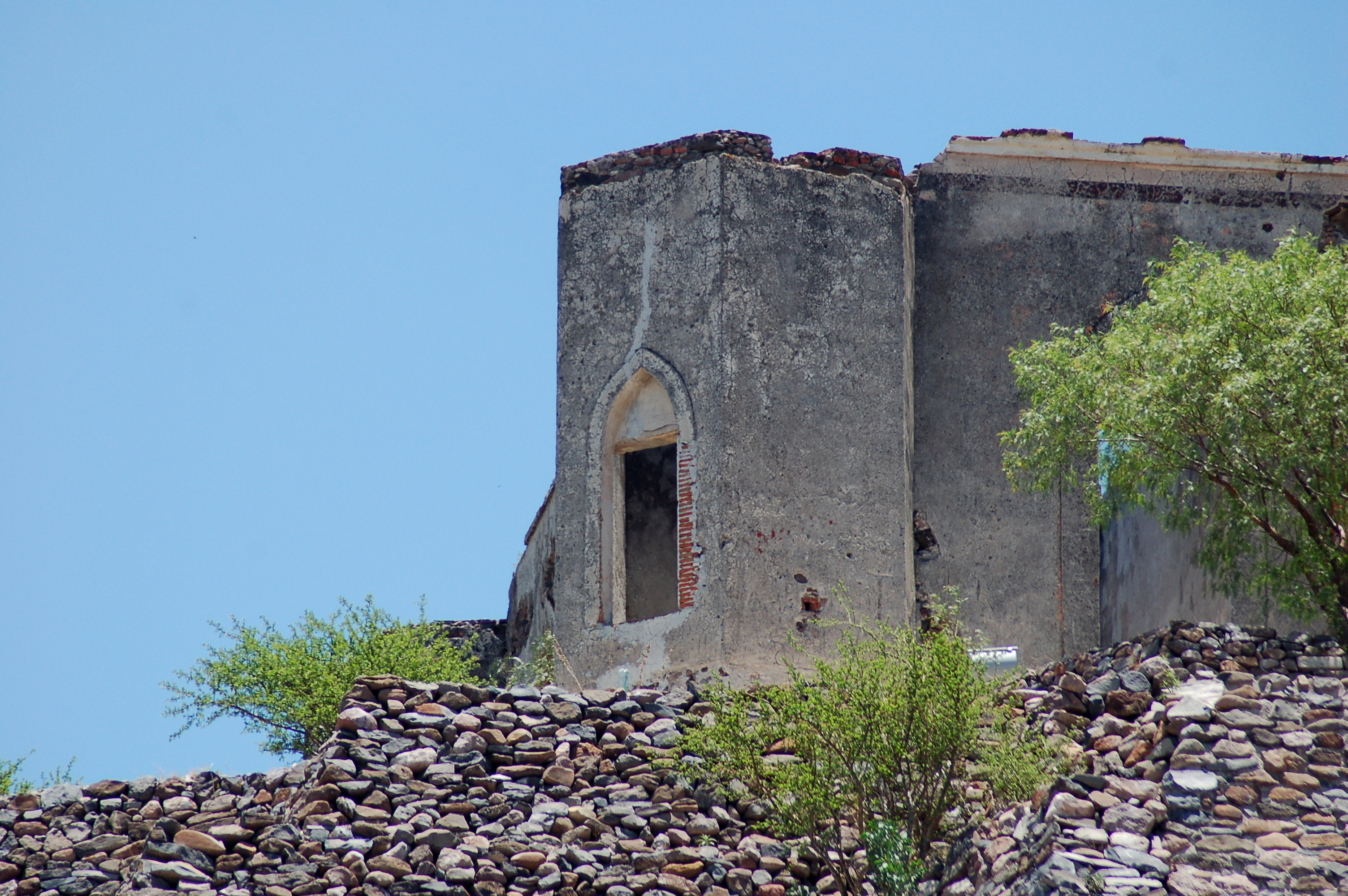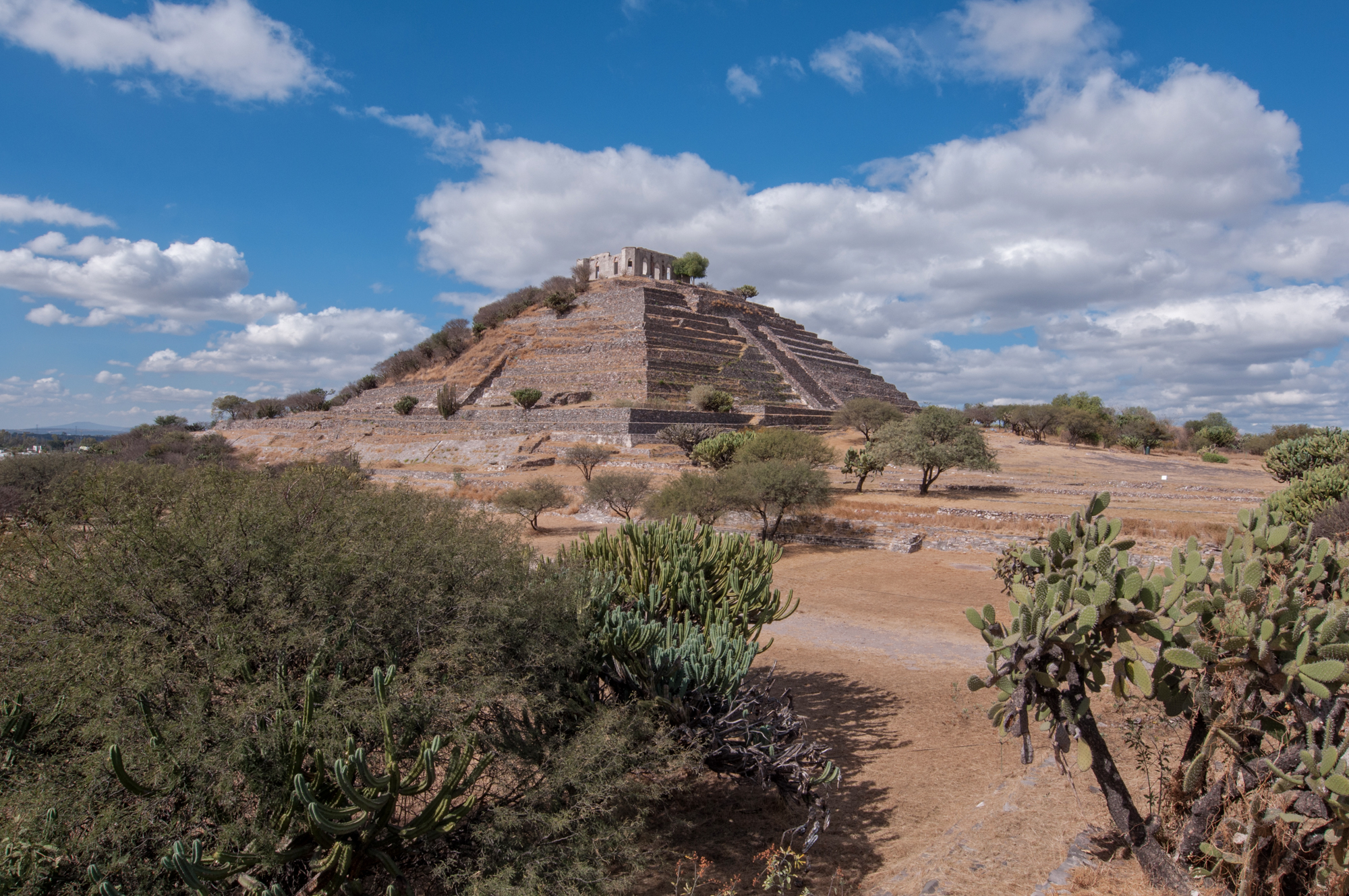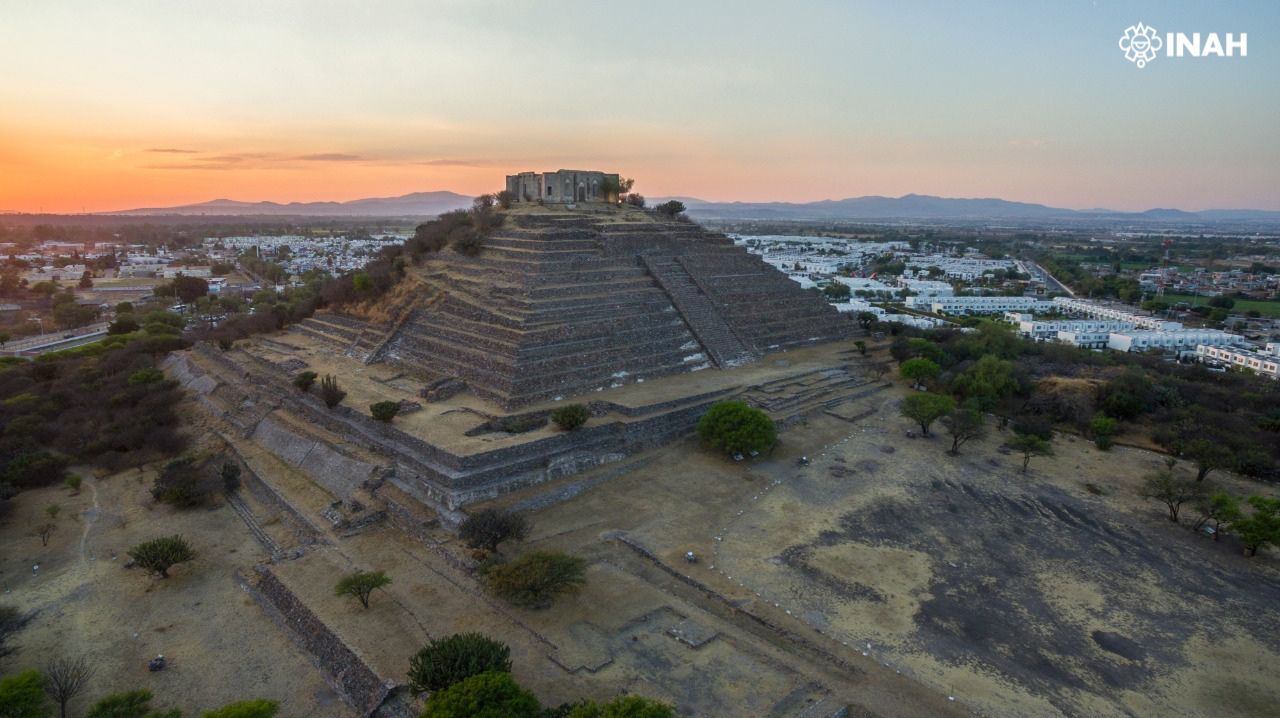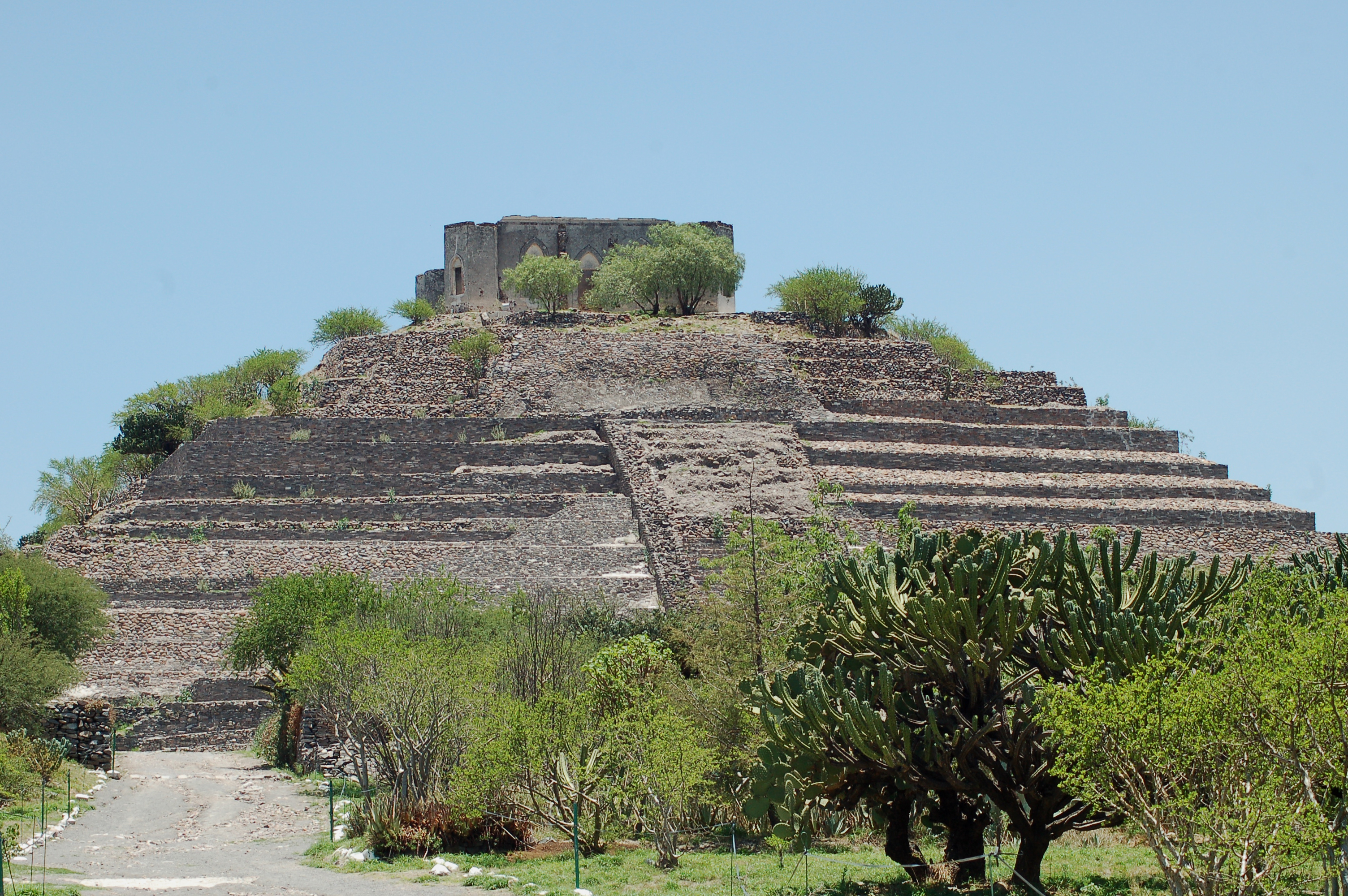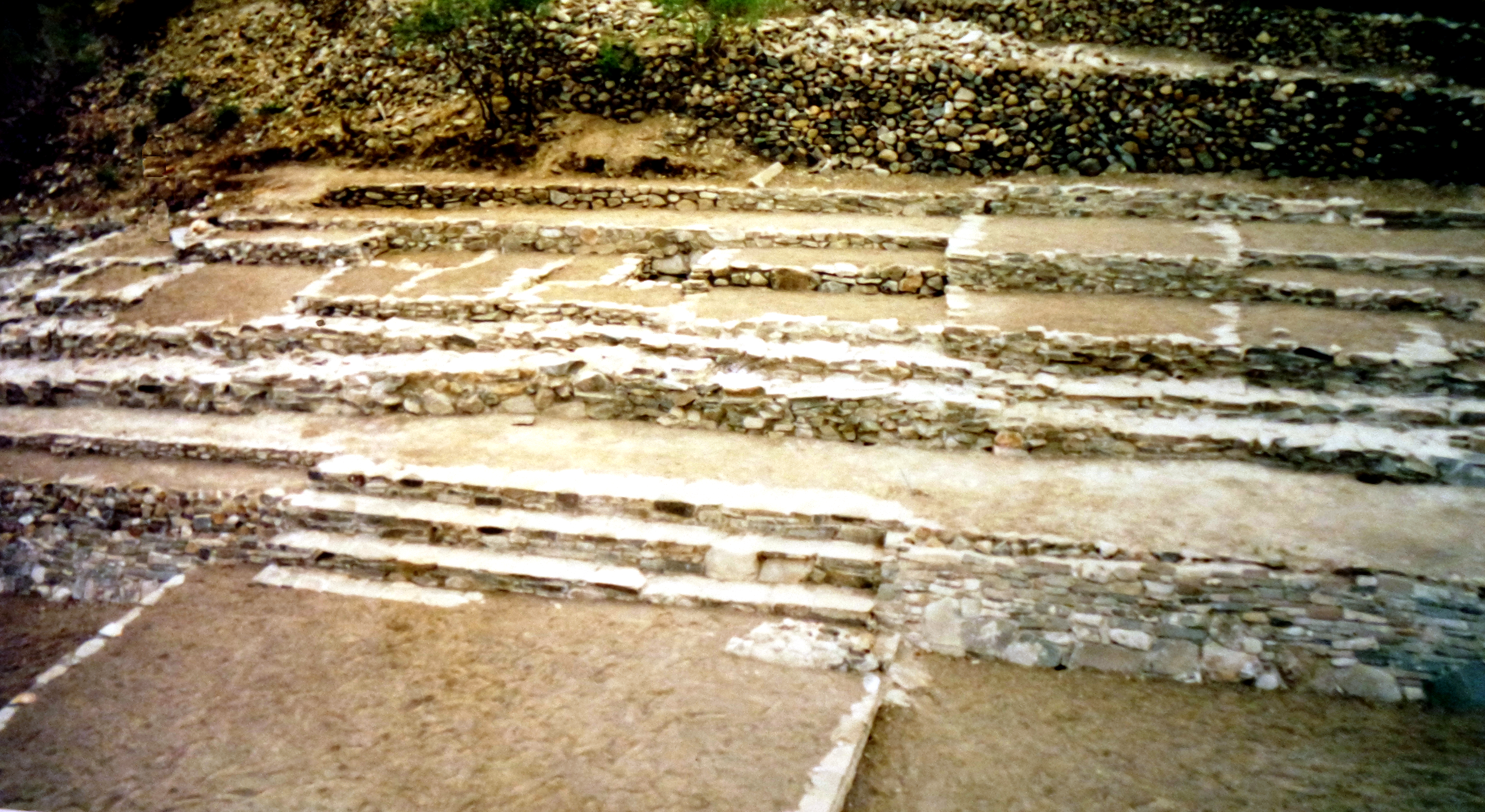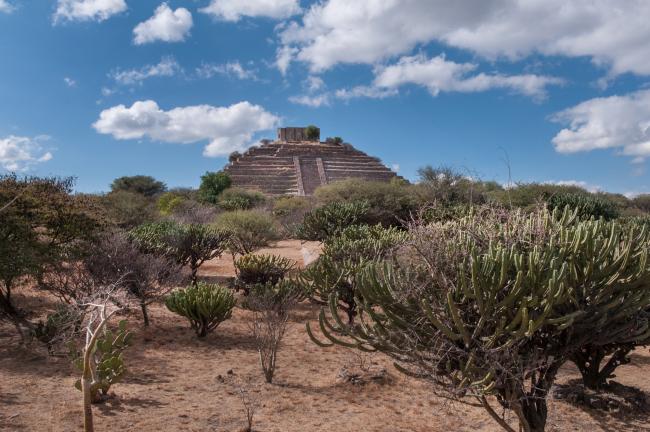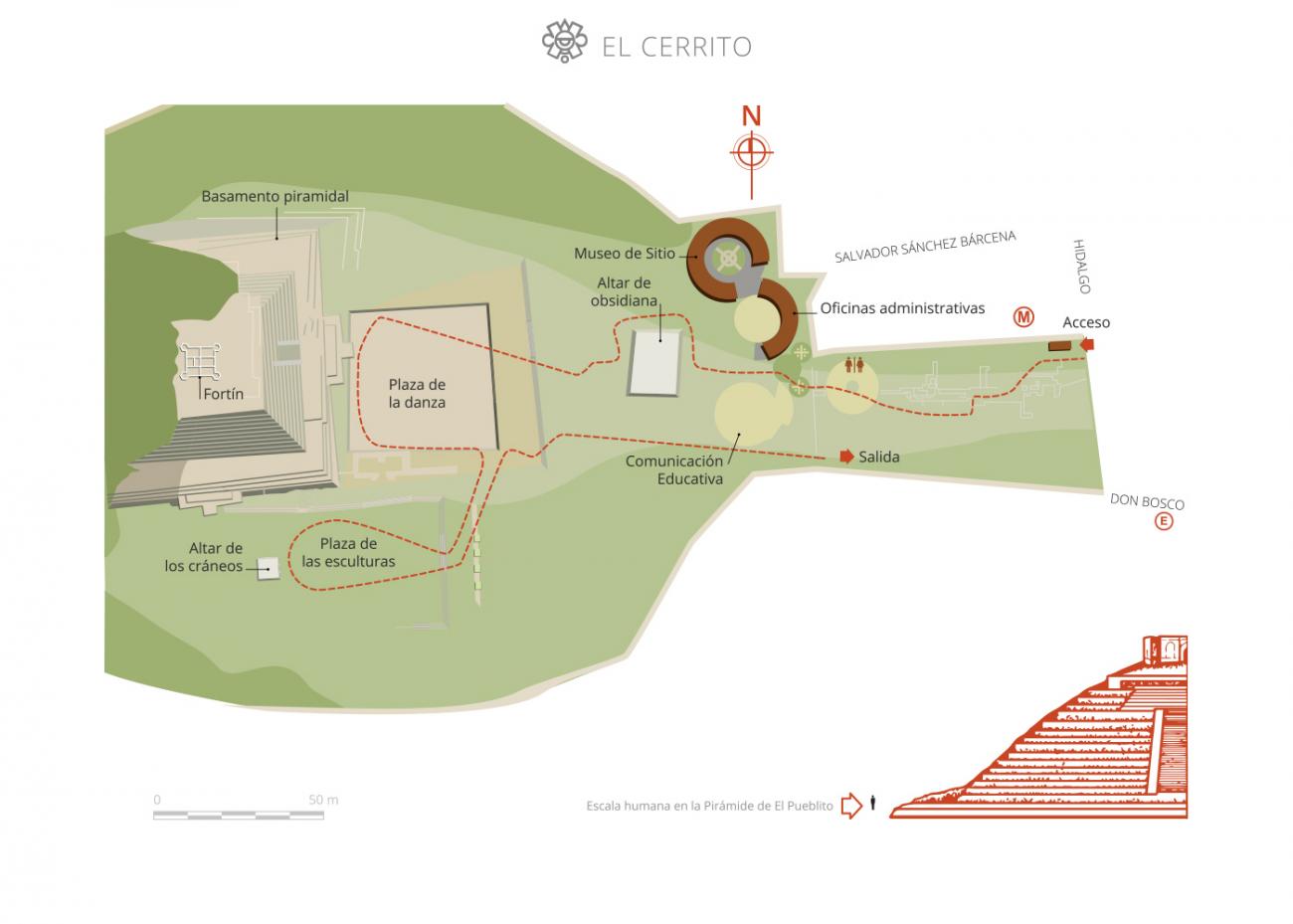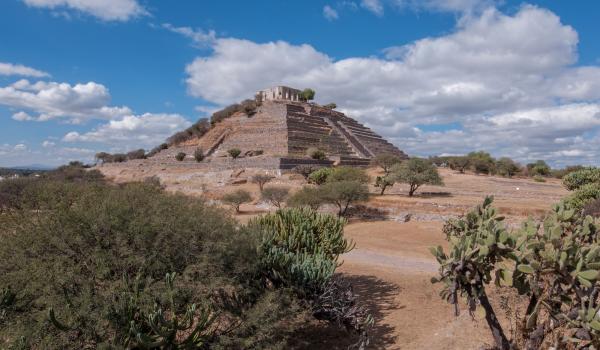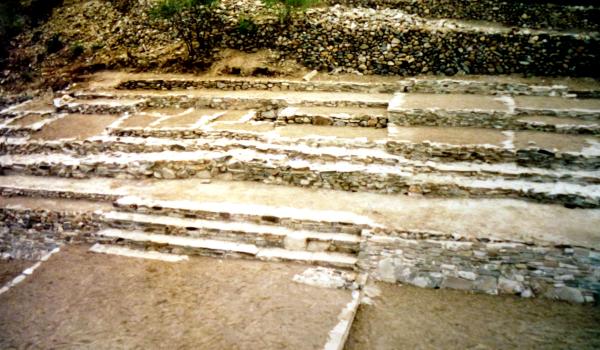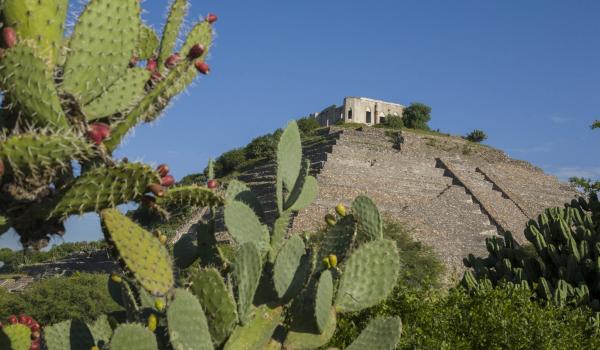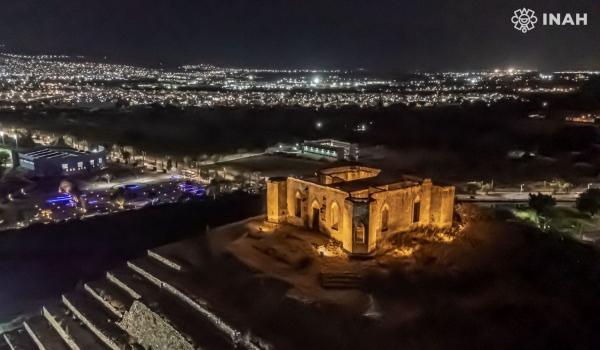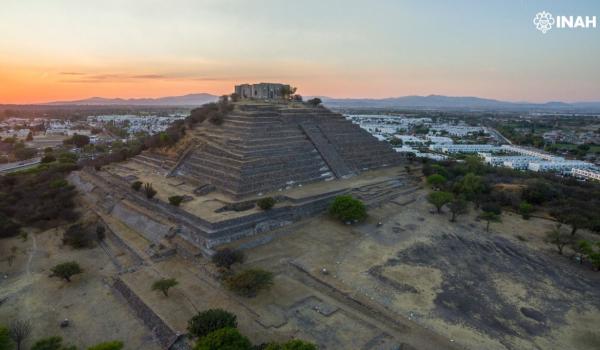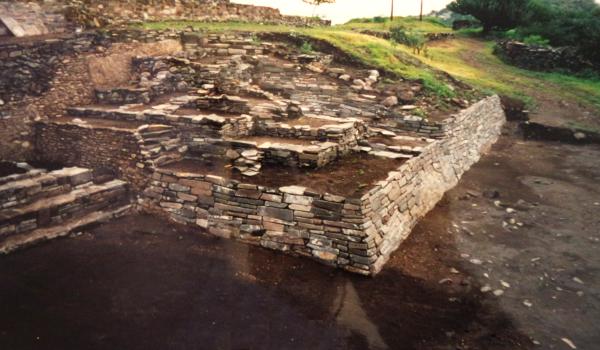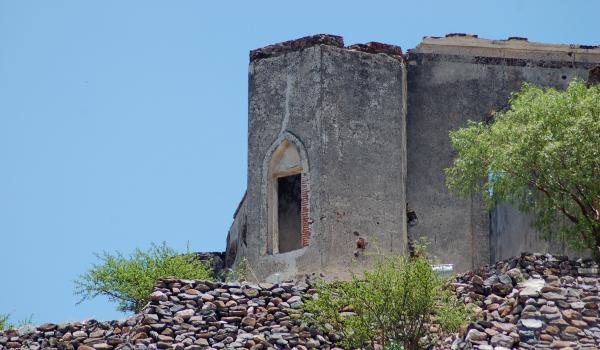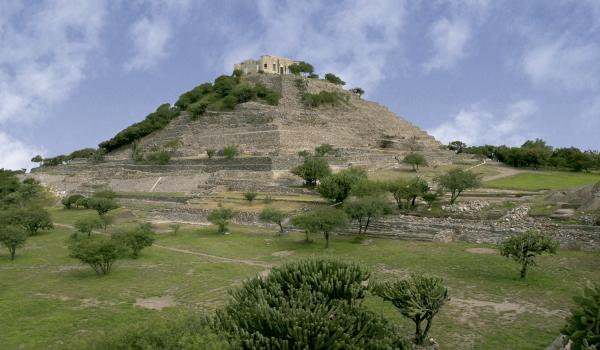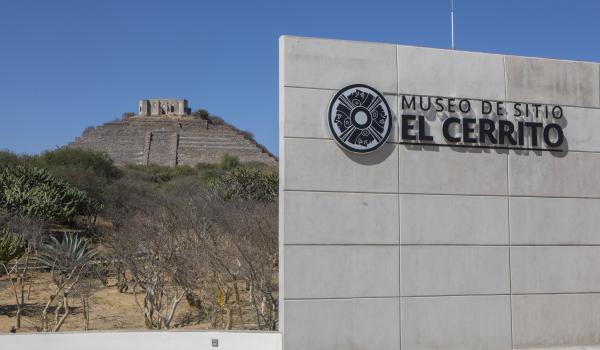This ceremonial site is in the meadows beside the river El Pueblito. It was built on a small rise to the south of the valley of Querétaro, and it consists of a broad platform on which buildings and plazas were constructed. The site’s most notable structure is a pyramid close to 100 feet in height.
El Cerrito was established as a farming settlement in the early years of the first millennium AD. Between 400 and 650 it became the seat of an important political unit in the valley of Querétaro, since it formed part of the network of sites allied to Teotihuacan that maintained control over the production and trade of obsidian. It was in this period that the great pyramid was built. It reached a peak of development in the mid-seventh century, after the fall of Teotihuacan, which lasted until the eleventh century. During this time, it was a regional center for the worship of a fertility deity visited by many groups who contributed labor for its construction and maintenance. During these years the local elite also established relations with Tula.
The site was built following a quadripartite system: the ceremonial space is divided into four sections oriented to the cardinal points. In addition to the main structure, it had a platform and a group of buildings and plazas decorated with reliefs, crowns and sculptures.
Despite the abandonment of the site in the eleventh century, it was not forgotten by local people who would take offerings there. It was inhabited again in the sixteenth century when the town of San Francisco Galileo was founded, with a population composed of the Otomi and Tarascan ethnic groups. A small pentagonal fort with four turrets was built on top of the great pyramid in the mid-nineteenth century, with an ammunition store in the center. The building was later adapted as the residence of the Fernández de Jáuregui family.
The first exploration work began in 1932 wehn the local inspector of monuments, Miguel Patiño reported a series of unauthorized excavations made by the landowners. Subsequently, formal archeological work began in 1936 under the direction of Eduardo Noguera. In 1944 Carlos Margáin visited the site to gather information on the monuments of the north and west. Observing the architectural layout, he determined that it was of Toltec influence. Later, in 1960, Román Piña Chan proposed that the site dated from the Epiclassic period, and specificallly to the Toltec phase. The El Cerrito archeological project began in 1984. The following year an initial survey took place with Carlos Castañeda and students from the Universidad Veracruzana.


